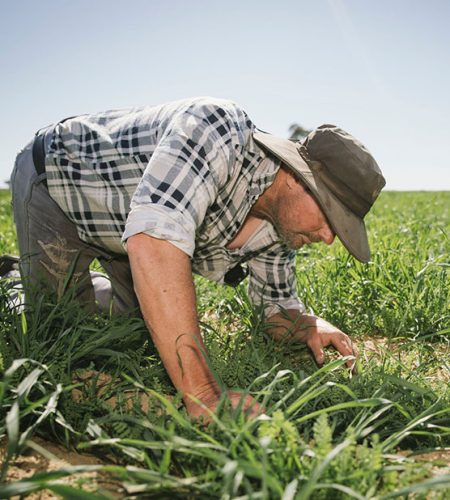Dr Shane Powell
Project Leader
University of Tasmania
Farmers often intuitively assess soil by smell. There is strong evidence that the fingerprint of gases emitted from soil can identify the composition and activity of the microbial community which relates to soil health. Currently there are no field based sensors to diagnose soil health using aromas. An ‘electronic nose’ offers a solution to this problem.
Work has begun on the prototype eNose and a range of sensors to show “proof of concept” of this technology. The eNose is being co-developed with farmers to ensure that the technology is useful, usable and provides relevant information which is easily interpreted and understood by farmers themselves. Being able to do this will mean that farmers can make the right management decisions to improve crop performance and yield, especially in poor soils.
An objective diagnosis of soil health will assist farmers and other land managers in understanding which management practices and environmental events have positive or negative effects on soil microbial communities, as well as enabling the temporal monitoring of soil microbial health.
Currently, there are very few rapid and cost effective in-field techniques available to assess and monitor the health of soil microbial communities. The eNose will “smell” the soil (via gas sensors) and then translate this gas fingerprint into microbial health metrics. Microorganisms in the soil produce many chemicals including volatile organic carbons (VOCs). These are small carbon-based molecules that evaporate easily. Different types of microbes produce different VOCs that the eNose can detect and use to provide an indication of how the soil microorganisms are functioning.
This project aims to build on expertise available through previous eNose research activities and build on existing sensor technologies. The project will have very close synergy with other Soil CRC research into determining the key microbial indicators of performance.
The soil eNose could be used as a stand-alone tool, complete with other soil (temperature, pH, and moisture) sensors, or integrated into more complex precision agriculture systems including components which are under development by the Soil CRC.
The prototype eNose is being built by an expert in eNose technology for measuring volatiles emitted during insect damage to crops. The prototype consists of a sensor array made from low cost, off-the-shelf components. Existing sensors used include: carbon monoxide, carbon dioxide, sulphur dioxide, hydrocarbons, ammonia, organic solvents, nitrogen dioxide, ethylene, and nitric oxide. They are exploiting the cross sensitivity of these sensors to create a signature of soil aromas. The tool will also include basic environmental monitoring capability (soil moisture, pH and temperature; air temperature and humidity).
The eNose will function biometrically i.e. in a similar way to how humans smell. Humans have learnt to associate certain aromas with certain items – although there is no ability to measure or identify the exact gases present.
The eNose design we propose mimics biochemical processes and the exact compounds emitted do not need to be identified. We aim to use the signature of these compounds as a proxy for health and function of the soil. Some of the sensors however will act in a traditional capacity, e.g. the eNose will have a carbon dioxide sensor (carbon dioxide flux is commonly used as a measure of soil respiration, it is known that high respiration rates are associated with healthy and productive soils).
An eNose will be located on a single farm for a “proof of concept” test that it can observe changes in gas emissions over time. Data will be analysed using the basic calibration data acquired in lab testing and related to basic response variables shown by the stress trials. The eNose prototype is currently being tested with some farmers, with more testing to come.

